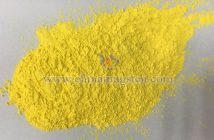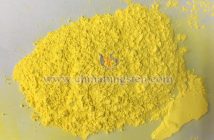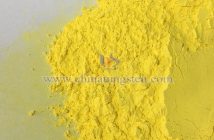Yellow tungsten oxide (WO?) produced by CTIA GROUP LTD leverages its unique crystal structure to exhibit exceptional chemical and physical properties, making it a vital material across various fields. Typically adopting an orthorhombic crystal structure, WO? features oxygen atoms arranged in a near-octahedral configuration around tungsten atoms, forming a stable three-dimensional network. This arrangement endows yellow tungsten oxide with remarkable stability, electrical properties, and optical characteristics, enabling its widespread use in electronic devices, energy storage systems, and glass applications.
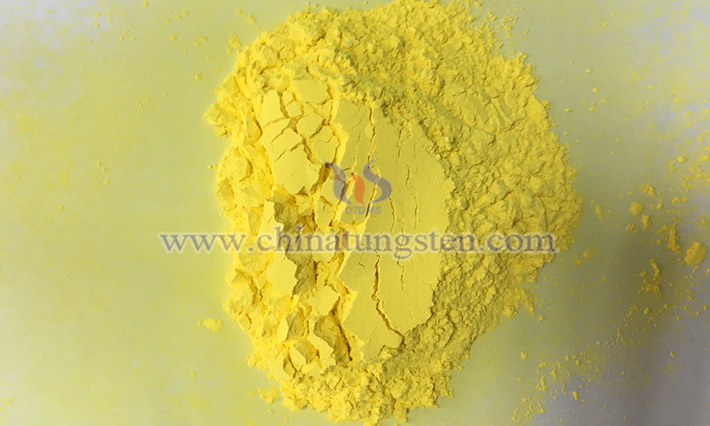
Impact of Crystal Structure on Physical Properties
The crystal structure of yellow tungsten oxide profoundly influences its physical properties. For instance, its high melting point (approximately 1473°C) is closely tied to the tight connectivity of WO? octahedra and the strong interatomic forces within the lattice. This compact structure requires significant energy to disrupt the bonds and break down the crystal lattice, resulting in its elevated melting point, which ensures stability under high-temperature conditions.
The density of WO?, approximately 7.16 g/cm3, also stems from its crystal structure. The close packing of WO? octahedra, combined with the relatively high atomic mass of tungsten, contributes to this high density, making it suitable for applications requiring dense materials.
Regarding solubility, yellow tungsten oxide is insoluble in water and most inorganic acids (except hydrofluoric acid) but dissolves in alkaline solutions—a trait directly linked to its crystal structure. The chemical bonding between tungsten (W) and oxygen (O) atoms, along with the lattice’s stability, renders it resistant to breakdown in acidic environments. However, in alkaline solutions, OH? ions react with WO?, disrupting the chemical bonds within the crystal structure and enabling dissolution. This solubility property is exploited industrially to extract and purify WO? using alkaline solutions, removing impurities and enhancing product purity.
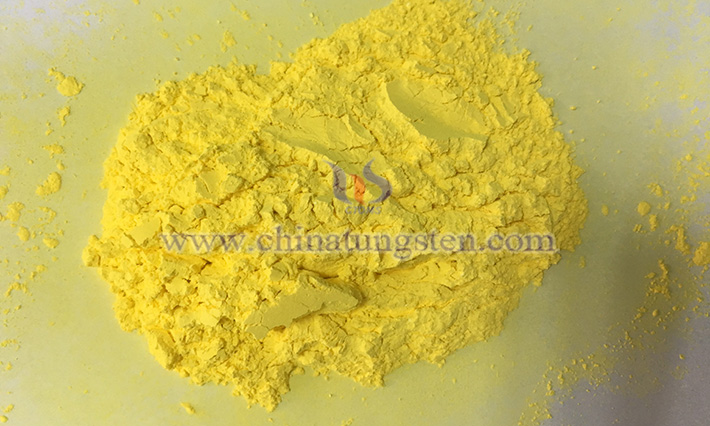
Influence on Chemical Properties
The crystal structure also plays a pivotal role in WO?’s chemical properties. Its chemical stability at room temperature and pressure is a result of the robust spatial framework formed by vertex-sharing WO? octahedra. This stability prevents external substances from easily disrupting the lattice, ensuring consistent chemical behavior. In chemical manufacturing, WO? serves as a reliable catalyst support or additive, maintaining its integrity in complex chemical environments and facilitating reactions without unwanted side reactions.
WO?’s redox activity, a key chemical property, is tied to the variable oxidation states of tungsten within its crystal structure. Oxygen vacancies introduce deviations from the ideal stoichiometry, allowing tungsten to exhibit oxidation states ranging from +2 to +6. This versatility enables WO? to actively participate in redox reactions, flexibly interacting with other substances, which is invaluable in catalytic applications.
The gas-sensing capability of yellow tungsten oxide is another property intricately linked to its crystal structure. As an n-type semiconductor, WO? features abundant oxygen vacancies on its surface—acting as "traps" within the lattice. When exposed to reducing gases like NO?, NH?, or CO, these gases react with oxygen species adsorbed on the WO? surface, altering its electronic structure and significantly changing its conductivity. This conductivity shift is detected by external circuits, enabling highly sensitive gas detection. In environmental monitoring, WO?-based gas sensors leverage this property to track harmful gas concentrations in real time, safeguarding air quality and public health.
Current Research and Structural Tuning
Regulating the crystal structure of yellow tungsten oxide has become a focal point in contemporary research. Scientists are exploring ways to precisely control defects, crystal facet orientation, and grain size through modified preparation techniques and targeted doping, aiming to optimize its performance.
Doping: Introducing small amounts of metal ions such as molybdenum or niobium alters WO?’s electronic structure and defect density, enhancing its gas-sensing and catalytic properties.
Process Control: Fine-tuning preparation conditions—temperature, pressure, and reaction duration—regulates crystal growth rate and orientation, yielding WO? with tailored structures to meet specific application needs.

